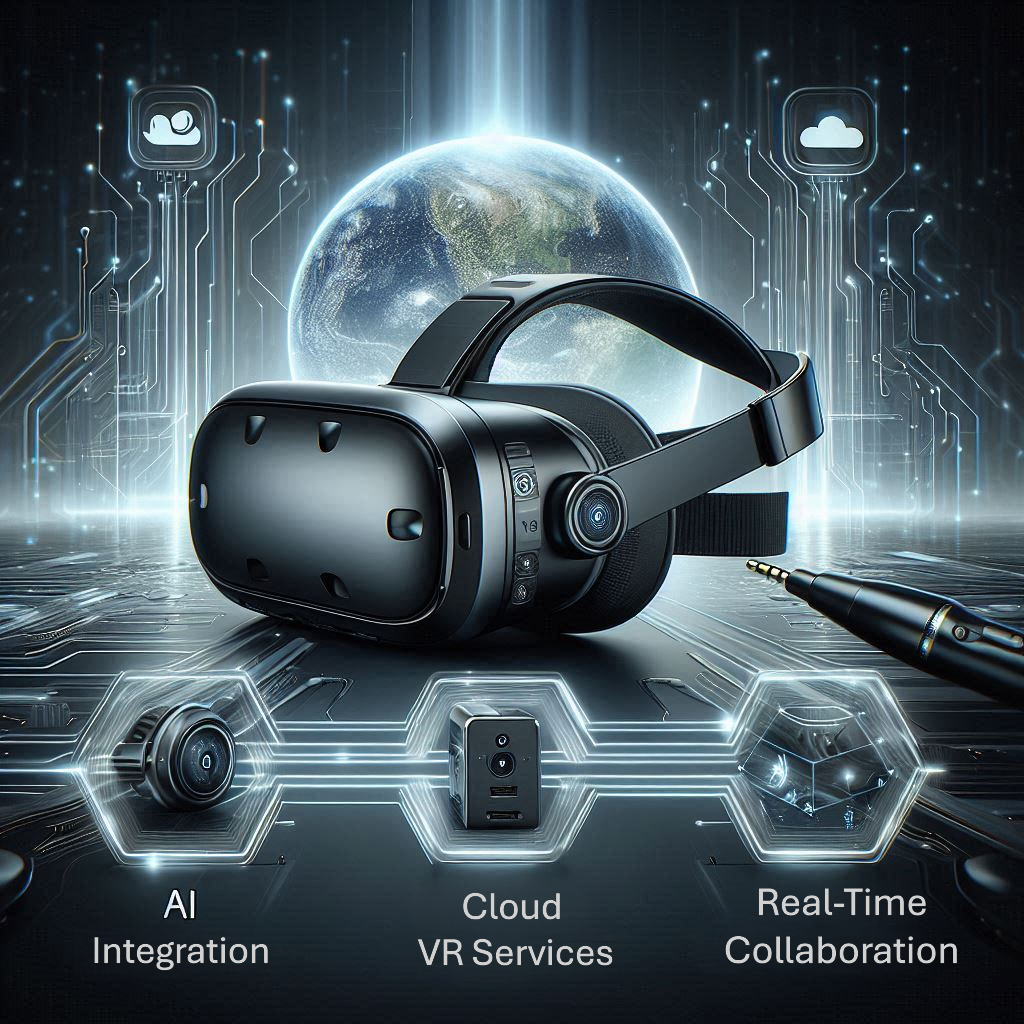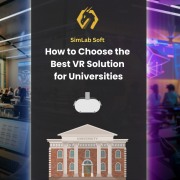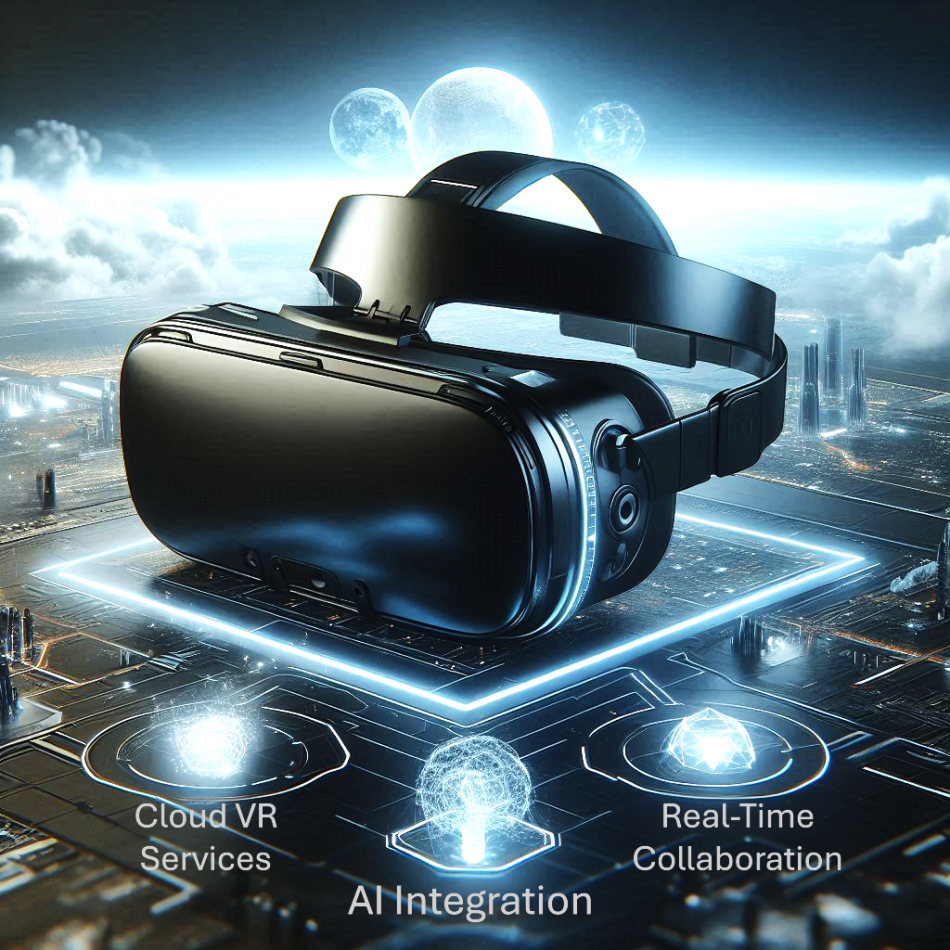The virtual reality (VR) landscape is continually evolving, driven by technological advancements and shifting user expectations. As VR providers look ahead, staying abreast of upcoming trends and innovations is essential for maintaining competitiveness and meeting the needs of diverse clientele. This blog will explore some of the most promising trends on the horizon, including AI integration, real-time collaboration, and cloud VR services, as well as how the industry is preparing for the future.

Upcoming Trends in VR
1. AI Integration
Artificial intelligence (AI) is poised to revolutionize VR by enhancing interactivity and user experience. AI can be used to create smarter virtual environments that adapt to user behavior, enabling more personalized experiences. For instance, AI-driven NPCs (non-player characters) can dynamically respond to users, making the virtual world feel more alive and engaging. This AI integration can be particularly transformative in training, education, and gaming, where personalized and responsive virtual environments are key.
As AI becomes more advanced, VR experiences will not just be reactive but also predictive, offering users the ability to engage in more meaningful and tailored interactions. With AI-driven analytics, developers can also gain deeper insights into user behavior, helping to refine and improve the overall experience.
2. Real-Time Collaboration
The shift toward remote work has accelerated the need for real-time collaboration tools within VR environments. Future VR solutions will focus on enabling teams to work together seamlessly, regardless of their physical locations. Features such as shared virtual workspaces, interactive presentations, and live editing capabilities can transform how teams collaborate on projects, fostering greater productivity and creativity.
In the world of VR, collaboration goes beyond just communication. It involves creating environments where users can interact, brainstorm, and create in real time, with the added benefit of immersing themselves in a fully virtual space. This trend will be a game-changer for industries ranging from education to healthcare, where collaborative learning and decision-making are critical.
3. Cloud VR Services
As cloud computing continues to mature, cloud VR services are expected to gain significant traction. By leveraging the power of the cloud, VR providers can offer users access to high-quality VR experiences without the need for expensive hardware. Cloud VR will democratize access to immersive technology, enabling businesses and individuals to utilize VR without significant upfront investment.
This trend has the potential to make VR more accessible to a broader audience by removing barriers related to hardware requirements. With cloud VR, users can access VR applications on-demand, transforming how VR content is delivered and experienced. This shift will be essential in driving the widespread adoption of VR across industries and for general consumers.

How Leading Platforms are Preparing for the Future
Now, let’s take a closer look at how major VR platforms are preparing for these exciting trends and innovations:
1. SimLab’s Innovative Solutions
SimLab is pushing the envelope in VR innovation, particularly through its AI-powered features like ChatGPT integration. This allows users to create NPCs that deliver realistic, topic-specific feedback within VR environments. By defining the subject matter and setting response limits, users can ensure that their learning experiences are focused, efficient, and impactful. This integration enables dynamic, engaging virtual environments that respond to user inputs in a more lifelike manner, making VR an even more powerful tool for training and education.
Beyond AI, SimLab also focuses on user-friendly tools that facilitate real-time collaboration, enabling seamless teamwork in shared virtual spaces. The platform’s cloud-based services eliminate the need for expensive hardware, making high-quality VR more accessible and easier to implement across various industries.
2. Unreal Engine’s Commitment to Realism and Flexibility
Unreal Engine remains at the forefront of VR innovation, consistently pushing the boundaries of high-fidelity graphics and performance. The platform integrates cutting-edge technologies, including AI, to enhance the realism of virtual environments. Unreal Engine’s ability to deliver photorealistic graphics coupled with AI-driven adaptability makes it a leader in creating immersive, interactive experiences.
Additionally, Unreal Engine’s continuous improvements to collaboration tools ensure teams can work together on VR projects in real time, regardless of their location. This flexibility is crucial for collaborative projects, particularly those in creative industries or large-scale training simulations.
3. Unity’s Emphasis on Accessibility and Scalability
Unity’s focus on accessibility ensures that VR technology can reach a wider audience. By emphasizing scalable solutions, Unity provides developers with the tools they need to create VR experiences that can grow and evolve with user needs. Unity’s exploration of AI integration aims to enhance user interactions, making VR more engaging and intuitive.
Unity is also making strides in cloud-based services, enabling users to access VR content across devices, further broadening the platform’s usability. As it enhances its collaboration tools, Unity is positioning itself as a leader in scalable, accessible VR technology for diverse industries.

Conclusion
The future of VR is full of potential, with trends like AI integration, real-time collaboration, and cloud VR services driving the next wave of innovation. As these technologies mature, VR providers must stay ahead of the curve by embracing these trends and incorporating them into their solutions. By doing so, they will be able to offer more immersive, collaborative, and accessible VR experiences, ensuring they remain at the forefront of this rapidly evolving industry.
References
- AI and Immersive Experiences (for insights on AI’s potential in VR, AR, XR, and the Metaverse).
- AI in Unreal Engine: Learning through Virtual Simulations (for information on how Unreal Engine incorporates AI for more immersive virtual simulations)
- Unity’s Vision for Virtual and Augmented Reality (for Unity’s plans to integrate AI and enhance accessibility in VR).
- SimLab Composer: What’s New (for the latest advancements in SimLab Composer and AI-driven VR experiences).
-

1 Scaling VR Solutions for Large and Small Companies: A Strategic Approach
-

2 Talent Retention and High Turnover: Building Sustainable Teams in the VR Industry
-

3 Security Concerns in VR: Safeguarding Data and Intellectual Property
-

4 Integration with Existing Tools: A Seamless Workflow for VR Service Providers
-

5 Content Creation Struggles: Balancing Quality and Time in VR/AR Projects
-

6 Speed and Efficiency: Overcoming Challenges as a VR/AR Service Provider
-

7 Bought VR Headsets for Your School… and Now They’re Collecting Dust?
-

8 How to Choose the Best VR Solutions for Universities: A Comprehensive Guide
-

9 Fast, Affordable Custom VR Experiences – Pay Only if You’re Satisfied!
-

10 Looking for VR Creators for Our SimLab VR Store

